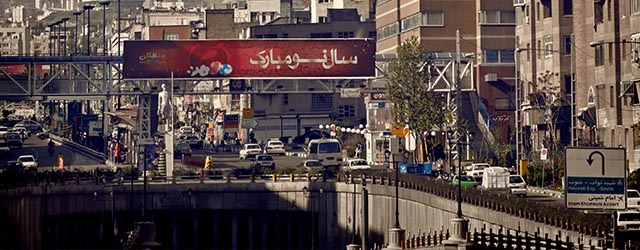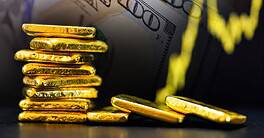The prospect of the lifting of economic sanctions against Iran has investors excited about the return of this market to the global economic community. But the message is: Proceed with caution.

As 35 years of economic sanctions against Iran wind down, anticipation over the country’s return to the global economy is reaching fever pitch among investors. The prospect of “implementation day”—the moment when sanctions are suspended—is much anticipated, but before that milestone can be reached Iran must fulfill its obligations under the nuclear agreement struck between the P5+1 (China, France, Russia, the United Kingdom, and the United States; plus Germany) in July. Already critics are saying that Iran may cheat on the nuclear deal once the prospect of a sanctions snap-back is gone.
Nevertheless, international companies are increasingly hopeful Iran will complete the dismantling of large swaths of its nuclear infrastructure in the first half of 2016—paving the way for a return to the status quo ante, at least in business terms.
The Next Big Thing?

According to petroleum giant BP, Iran has the fourth-largest proven oil reserves in the world after Venezuela, Saudi Arabia and Canada. The International Monetary Fund says Iran also possesses the world’s second-largest gas reserves. However, sanctions have had a profound on Iran’s economy. During 2012–2013, real gross domestic product contracted by 9%, and a large depreciation of the Iranian rial along with supply-side disruptions pushed 12-month inflation to a staggering 45% in June 2013, according to the IMF.
With such a shock to the economy, it is easy to understand why investors are betting on a bounceback in the next few years. On the face of it, they may be right. With a population of 80 million and GDP of $416.4 billion, Iran may be a rare bright spot in the emerging markets sphere in 2016. Yet despite optimism, it is questionable how uniform economic recovery will be, owing to the lack of a comparable yardstick to benchmark against. Iran’s opaque economy and complex operating environment add to downside risks for companies considering doing business with the Islamic Republic.
Nevertheless, the IMF predicts several sectors will receive an immediate boost once sanctions are lifted. Iran’s return to oil markets and the need for substantial investment in
hydrocarbon infrastructure are already firmly on international energy companies’ radar. In addition, the country’s banking sector, with its renewed access to SWIFT (Society for Worldwide Interbank Financial Telecommunication) and foreign capital, as well as the aviation and automotive sectors, are all expected to benefit from sanctions relief. Although investment in the domestic economy is exciting international companies, additional oil exports from Iran are potentially disruptive to already fragile markets.
How quickly Iran can ramp up oil production, as well as what effect doing so will have on prices, is vexing analysts, but a consensus is emerging. Jaap Kalkman, managing partner and global practice head, energy and utilities practice, at consultancy Arthur D. Little, says the effect on prices may be limited. “I believe the Iranians would be able to add 0.5–1.0 million barrels per day within a 12 months period.” Kalkman predicts oil prices will settle at $60 to $70 a barrel in the next few years, based on the long-term development costs of US shale. The IMF forecasts an increase of around 0.6 million barrels a day in 2016 and that Iran’s real GDP will rise by up to 5.5% in 2016–2017 and 2017–2018, but hover around 3.5% to 4% annually in the years after. The IMF estimates that if OPEC does not compensate for the increase in Iran’s oil exports by cutting its own oil production, oil prices could fall between 5% and 10% in the medium term.
Tangled Webs

Investors need to be mindful of vested interests operating in Iran that are opposed to any changes in the balance of economic power, says Bryan Plamondon, senior manager for the Middle East and North Africa (MENA) group at IHS Economics. He says companies will have to carefully weigh their contact with Iran. “US and foreign companies with significant exposure to the US face further hurdles to doing business with Iran because of the risk of ‘snap-back’ of sanctions should the deal breakdown.” Additionally, US sanctions on Iran related to human rights and terrorism will remain in effect and preclude most aspects of US trade and investment. As a result, Plamondon expects banks and insurers will proceed with caution, following implementation day.
Omar El-Nahry, an analystat risk management company Stroz Friedberg, believes the reach of the powerful Iranian Revolutionary Guard Corps (IRGC), Iran’s most powerful security and military organization, and its influence on the economy should not be underestimated. “The recent deals leave most non-nuclear sanctions untouched, which puts companies controlled by entities such as the IRGC off limits—IRGC companies operate across a wide range of sectors, especially those relevant for foreign investors, such as construction and hydrocarbons.” Clearly US companies contemplating business in Iran must confront a welter of issues under KYC (know your customer) and due diligence obligations to remain in compliance with US Treasury rules.
In contrast, Iran’s long-standing trading partners, such as the United Arab Emirates, stand to gain, adding more than 1% to GDP between 2016 and 2018, the IMF forecasts. Qatar may also benefit from its expertise in the gas sector, as Iran overhauls outdated technology.
Despite a clampdown by president Rouhani, corruption remains deeply entrenched and renders Iran a difficult place to do business. The World Bank’s Ease of Doing Business 2015 report ranked Iran 130 out of 189 countries, below Pakistan and Egypt. El-Nahry warns that establishing beneficial ownership in Iran is also often complex. “Ownership stakes are often obscured through webs of charitable trusts, known as bonyads—whether a local company is linked to a sanctioned entity or individual is likely to be one of the key challenges in entering the market.”
An Uncertain Return
How and when Iran reintegrates into the global economy is undecided, but its return could have far-reaching economic effects. Iran’s economy contributes almost 1.5% of global GDP and 18% of MENA GDP. At a time when the neighboring oil-producing states of the Gulf Cooperation Council face shrinking reserves and escalating deficits, Iran’s return is problematic. Saudi Arabia’s economy, the GCC’s largest, could be hit hard as it relies heavily on hydrocarbon revenues.
Iran recently announced that it had identified 50 oil and gas projects, which could generate $25 billion in investments as part of a wider plan to rebuild critical infrastructure. With Iran targeting $185 billion in energy projects by 2020, the country will continue to be a focus of attention.
GFmag.com Data Summary: Iran
Central Bank: The Central Bank of the Islamic Republic of Iran |
|||
|---|---|---|---|
|
International Reserves |
N/A |
||
|
Gross Domestic Product (GDP) |
$417 billion |
||
|
Real GDP Growth |
2012 |
2013 |
2014* |
|
GDP Per Capita—Current Prices |
$5,353.3* |
||
|
GDP—Composition By Sector* |
agriculture: |
industry: |
services: |
|
Inflation |
2012 |
2013 |
2014 |
|
Public Debt (general government gross debt as a % of GDP) |
2012 |
2013 |
2014 |
|
Government Bond Ratings (foreign currency) |
Standard & Poor’s |
Moody’s |
Moody’s Outlook |
|
FDI Inflows |
2011 |
2012 |
2013 |
* Estimates
Source: GFMag.com Country Economic Reports



